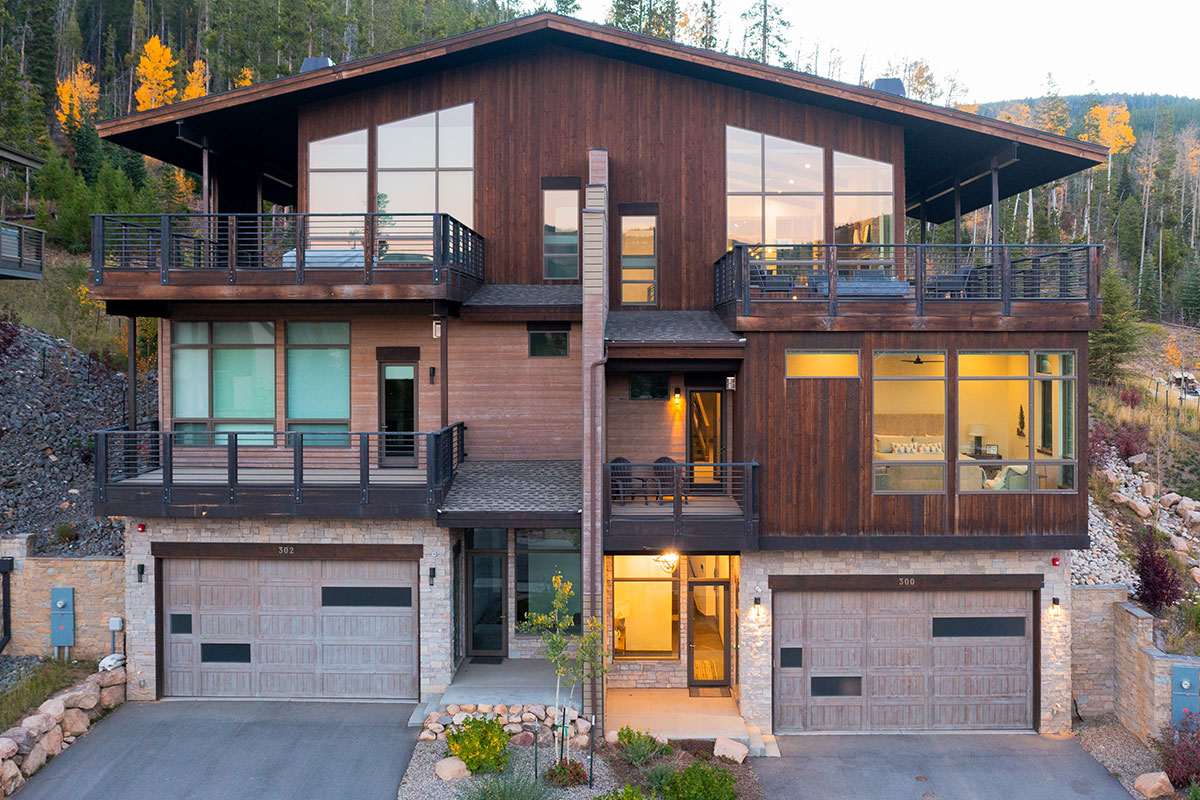Smart Multifamily Solutions for Living in the Mountains
The Role of Multifamily Housing in High-Demand Mountain Communities
In mountain towns, demand for housing is rising, but land is limited, and the character of these places is worth protecting. Multifamily architecture offers a thoughtful path forward. By designing with care, context, and community in mind, we can create housing that not only meets the moment but strengthens the fabric of the towns we love.
Design That Supports Community
Mountain towns offer more than a view; they offer a way of life. With close-knit neighborhoods, access to the outdoors, and a deep sense of place, these communities are drawing more people in. But as interest grows, housing becomes harder to find. Workers face long commutes, families are priced out, and small businesses struggle to retain staff.
Multifamily housing provides a smart, scalable way to help towns grow without losing what makes them special. Thoughtful design allows us to increase housing supply while maintaining the quality, character, and connection these communities are known for.
Well-designed apartments, townhomes, duplexes, and mixed-use buildings can fit seamlessly into the landscape, offering flexible housing options that support a year-round population and a thriving local economy.

Making Multifamily Feel Like Home
We often hear a common concern: people want multifamily housing to feel more like a personal home, not a generic apartment complex. That’s where design matters.
We approach every project with this goal: create spaces that feel human-scaled, connected to the land, and grounded in the local architectural language. That means:
- Private entries and varied rooflines to make buildings feel approachable
- Breaking down building massing to fit with the natural scale of the neighborhood
- Designing to the slope of the land rather than flattening it
- Maximizing light, views, and privacy for each unit
Outdoor spaces, balconies, courtyards, and patios are thoughtfully integrated to extend daily living and support connection to nature.

Designing with Respect for Place
We understand that new housing can raise concerns. Neighbors want to know how larger buildings will fit into their streetscapes or impact property values. That’s why we lead with empathy and design with intention.
Because of our background in custom residential architecture, we bring that same level of care to every multifamily project. We’re not interested in copy-paste solutions. Instead, we focus on:
- Listening to community concerns
- Designing in a way that feels familiar, not forced
- Honoring existing neighborhood character and elevating it through craftsmanship
Multifamily doesn’t need to feel like an outlier, it can feel like a natural part of the landscape when designed with respect.
Built for the Mountain Climate
Designing homes in a mountain environment means facing unique challenges: snow loads, steep slopes, freeze-thaw cycles, and shifting seasonal conditions. Our work accounts for all of it.
That includes:
- Durable materials built for performance and longevity
- Heated entries and protected walkways
- Smart snow-shedding strategies and roof drainage
- Integrated ski and gear storage for everyday function
Multifamily buildings amplify these challenges with shared systems, larger roofs, and more residents. That’s why climate-responsive design is essential, not just to meet code, but to create comfort and longevity for everyone who lives there.
A Path Forward for Summit County (and Beyond)
Here in Summit County, and in mountain towns across the West, these housing questions aren’t theoretical. They affect daily life. We see how the housing shortage impacts the people who make these towns run and how multifamily design can be part of the solution.
In Summit County and other high-demand mountain towns, these housing conversations aren’t theoretical. They’re personal. We see every day how the housing shortage affects the people who make these communities thrive.
We believe that with the right approach, multifamily housing can be both a solution and a reflection of what makes these places so loved. It can be personal, well-crafted, and deeply connected to the community.
To see how we’re bringing this approach to life, explore our Multifamily and Commercial Architecture spotlight.
Because in the end, this work isn’t just about buildings. It’s about creating lasting value for people, for neighborhoods, and for the mountain towns we’re proud to call home.
